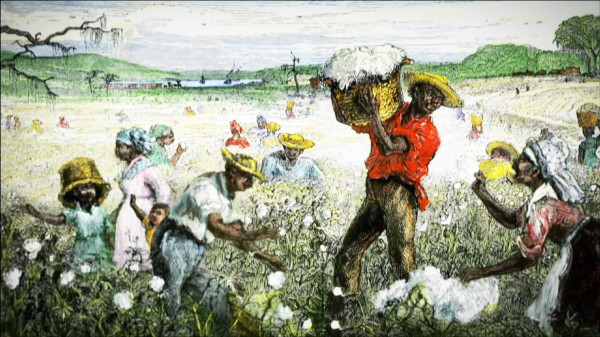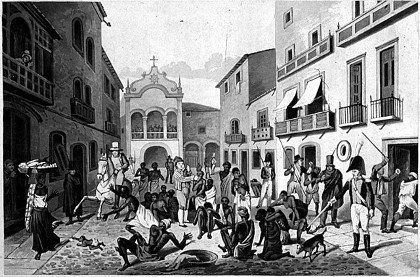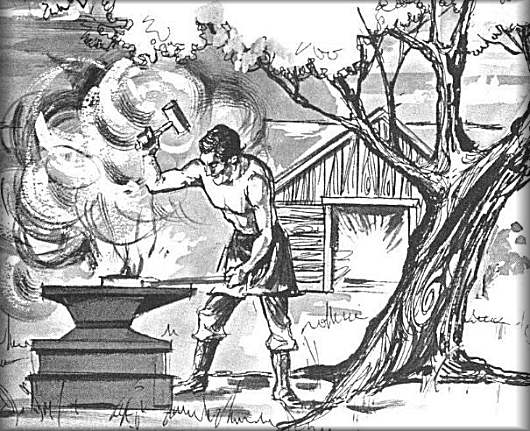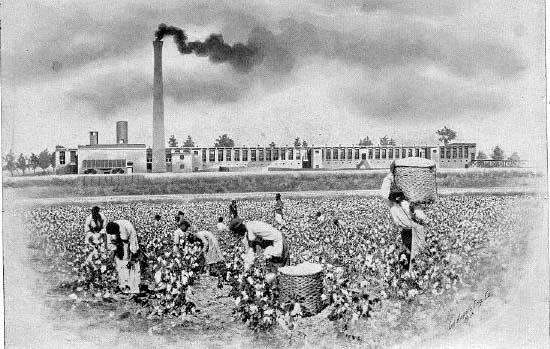December 17, 2014
9 Facts Proving Slavery
Was Responsible for
American and European
Economic Success
Posted by
Without the significant labor to cultivate the land Europeans claimed to have “discovered,” it would have been for naught. The notion of Europeans or Native Americans working the land was not seriously considered. It was the enslaved Africans who were put to work to grow the abundant land into livable housing, farms and other businesses.
The Enslaved Were an ‘Investment’
To get an idea of how valued and valuable to the economy the enslaved were, each one represented as much as $130,000 in today’s prices when the South seceded from the Union. Significantly, this was two times as much from 14 years before — a true measure of the impact of the enslaved and the increased demand in the marketplace. According to economists, this alone would crystalize how “investing” in an enslaved person was a money-maker that drove business.
Slave Traders Amassed a Fortune Off Black Bodies
According to a BBC report, between 1761 and 1808, British traders hauled across the Atlantic 1,428,000 African captives and pocketed $94.4 million – perhaps $10 billion in today’s money – from slave sales.
Cotton Drove U.S. Economic Growth
According to the Gilder Lehrman Institute of American History, cotton provided over half of all U.S. export earnings. By 1840, the South grew 60 percent of the world’s cotton and provided some 70 percent of the cotton used by the British textile industry. Thus, according to the institute, slavery paid for a substantial share of the capital, iron and manufactured goods that laid the basis for American economic growth.
Enslaved Africans Represented a Significant Amount of Wealth in the Southern U.S.
When Abraham Lincoln signed the Emancipation Proclamation — which freed enslaved Africans only in the rebellious states and territories of the U.S. — approximately $10 trillion in today’s money was eliminated from the American economy with a stroke of his pen, according to MeasuringWorth.com. The so-called three-fifths compromise in the U.S. Constitution allowed the Southern states to count enslaved people as three-fifths of a person for the purpose of calculating states’ representation in the U.S. Congress. And so, the balance of power between slaveholding and non-slaveholding states turned, in part, on the three-fifths presence of enslaved Africans in the census. Slaveholders were taxed on the same three-fifths principle. Taxes paid on the enslaved supported the national treasury. So, the slavery system in the United States was a national system that touched the very core of its economic and political life.
City Work
Enslaved Africans also worked in urban areas, helping build them up. About 10 percent of the enslaved African population in the United States lived in cities like Charleston, South Carolina; Richmond, Virginia; Savannah, Georgia; Mobile, Alabama; New York; Philadelphia and New Orleans. All had sizable enslaved populations. In the Southern cities, they totaled approximately a third of the population, meaning they had the numbers to produce lots of work.
Value Based on Skills
The scope of jobs the enslaved were forced to do was vast and their value was based on their skills. They were domestics, but also fishermen, coopers, draymen, sailors, masons, bricklayers, blacksmiths, bakers, tailors, peddlers, painters and porters. Some were hired out to work as skilled laborers on plantations, on public works projects and in industrial enterprises. And even a small number of the enslaved hired themselves out and paid their owners a percentage of their earnings. According to MeasuringWorth.com, a premium was paid if the slave was an artisan — particularly a blacksmith (+55%), a carpenter (+45%), a cook (+20%) or possessed other domestic skills (+15%). On the other hand, an enslaved person’s price was discounted if the person was known to be a runaway (-60%), was disabled (-60%), had a vice such as drinking (-50%) or was physically impaired (-30%).
Global Demand for Cotton
Enslaved workers’ production in cotton was the backbone of the American financial and shipping industries. Same for the British textile industry. Cotton was not shipped directly to Europe from the South. It actually was shipped to New York and then transshipped to England and other centers of cotton manufacturing in the United States and Europe. After the “Panic of 1837,” there was a long depression, according to MeasuringWealth.com. Finally, the almost three-fold increase in prices after 1843 can be explained by several factors, including the rapid increase in the worldwide demand for cotton and increased productivity in the New South attributable to better soil and improvements in the cotton plant. It is clear during this time that the market for enslaved Blacks was active, and they were regarded as more valuable.
Bank Profits
Banks and financial institutions benefited by making loans or investments in the cotton plantation businesses, spurring more business and more money for the banks and plantation owners. The economic power of owning one enslaved person was much higher earlier in the century — as high as $8 million. This finding, according to MeasuringWorth.com, is consistent with the history of the period when Southern states exercised great influence on such issues as tariffs, banking and new areas of the country that would allow slavery. The “power measure” of owning a single person declined as time moved on because industrialization and agriculture in the North grew faster than the slave economy.
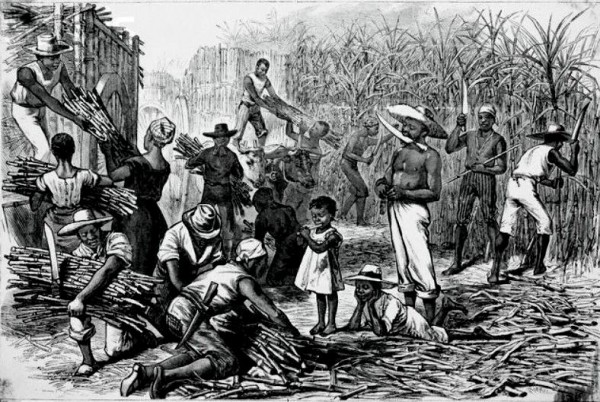
Collateral and Taxation
The actual collection and selling of enslaved Africans represented legal property — a commodity worth at least $400 at the time or $12,000 today. Individually and collectively, they were frequently used as collateral in all kinds of business transactions. They were also traded for other kinds of goods and services. In many cases, the enslaved were used to pay off debts held by the owner. The estimated value of the enslaved was calculated in the value of estates, becoming a tax revenue source for local and state governments. There were also taxes to be paid on slave transactions.
+++++++++++++++++++
Curtis Bunn is national award-winning sports journalist and best-selling novelist who has covered and written about sports’ largest events and personalities for more than three decades at The Washington Times, NY Newsday, The New York Daily News and The Atlanta Journal-Constitution.




